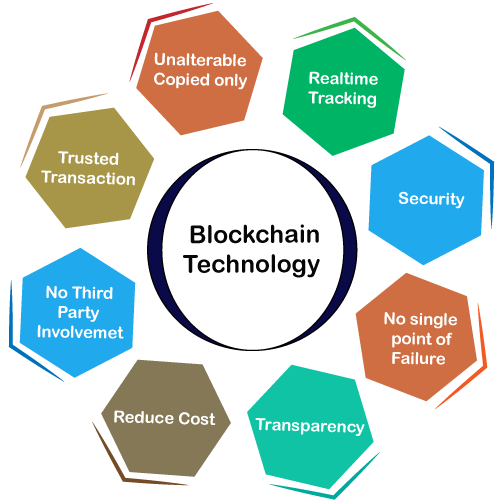Need of Blockchain
Blockchain is an open and decentralized network, which stores redundant data at multiple sites called nodes (computers). Its properties, such as immutability, distributed control, highly secured encrypted blocks, and anonymity, make it ideal for solving many practical real-time problems. Considering all the properties of Blockchain, this article discusses its need for providing technical solution of problems.
Blockchain is undoubtedly a smart invention. It comes with trust, decentralized network, and transparency, let's discuss some beneficial traits of Blockchain, which escalate its need for implementation in the coming future-
- Provides History of Activities
Blockchain maintains a record of all previous transactions and changes, which have been made from the beginning of its creation, along with the most recently updated status of data. In other words, Blockchain not only stores a snapshot of the most recent updates but also stores the history of all operations on data for reference.
- No Achilles Heel
The decentralized nature of the blockchain network makes it robust against any sort of attack. There exist no central vulnerable site to target and bring down the whole network. The distributed and dispersed nature of control amongst the nodes makes it very secure to use.
- No Need of Central Administrator
Each node in a blockchain network holds the most recently updated replica of records. Since every node holds the power to control the network equally, there is no need to have any central authority to look over and administrate work. This saves the cost of infrastructure required to its set up.
Why do we need blockchain?

- To record secure transactions between numerous partners
When it comes to record simple transactions between two parties, then the conventional database system can be efficiently used. However, for more complex transactions involving multiple mistrusting partners who want to interact and make changes in the data, Blockchain must be used. It yields satisfactory results to overcome tailback and congestion problems to simplify connections.
- To eliminate the role of a middleman
For instance, many sections of hospitality such as flight and accommodation providers have to deal with their guests through a centralized application or website playing the role of a middleman such as Trivago, Makemytrip, and Expedia, etc. As believed by many travel companies, the implementation of Blockchain would help to cut the role of middleman and help to establish direct interactions and deals with customers and tourists.
- To manage and assure the safety of digital relationships
Taking another example, for securing records of property or land rights and any other such assets, one needs a transparent and durable system in order to ensure this data.
Smart contracts are on such application of Blockchain, which expedite such digital connections/ transactions. Automated payments of requirement fulfillment and digital history of all records are some critical features of any smart contract.
- A tradeoff between transparency and privacy
A completely transparent system would commonly provide no privacy and make information available to anyone and everyone, making it susceptible to attacks. Similarly, a fully private system would provide no transparency. However, Blockchain is one such technology which provides a midway to balance both pellucidity and privacy. It does so by making all the transactions available for verification by the nodes in the network and, at the same time, using techniques to encrypt the block in chronological relation cryptographically.
- To maintain data integrity.
It is very important to secure the data from any unauthorized modifications. On a digital platform with extensive participation of nodes, in a distributed manner, the data is vulnerable to threats of being tempered or corrupted during transmission. Blockchain provides the feature of public verifiability to each of its nodes. Any harm to the integrity of the data can be reported via any node part of the network. This helps to maintain the integrity of data over a dispersed blockchain network.
- Autonomous system
Unlike customary organizations or companies, blockchain has no central body of governance or management. One such example is the Decentralized Autonomous Organization (DAO), which is defined by a set of rules mentioned in a smart contract that establishes the degree of its usage and evolution. DAO may have many investors who vote upon how to invest the funds of DAO. Since the investors have a feeling of mistrust amongst them, DAO is best implemented using permissionless Blockchain.